Abstract
Six pigeons were trained to discriminate different light intensities in four experimental procedures. Experiment 1 compared stimulus discriminability in a yes-no signal-detection task with discriminability measures obtained from two free-operant procedures. Discriminability estimates were significantly lower in the detection procedure. Experiment 2 showed this lowered discriminability to be a function of the delay between stimulus presentation and the availability of the choice-response keys in the standard detection task. In addition, reinforcement sensitivity was lowest when correct choice responses were intermittently, rather than continuously, reinforced.
Full text
PDF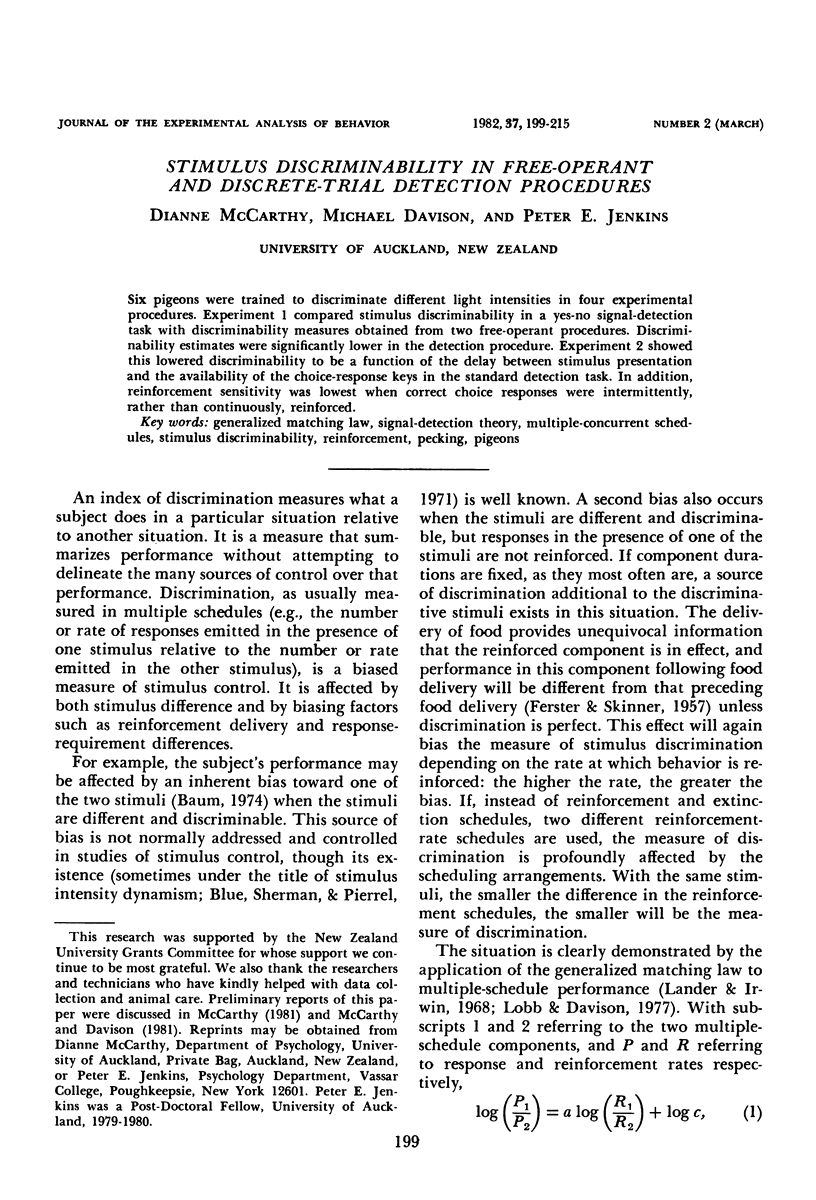
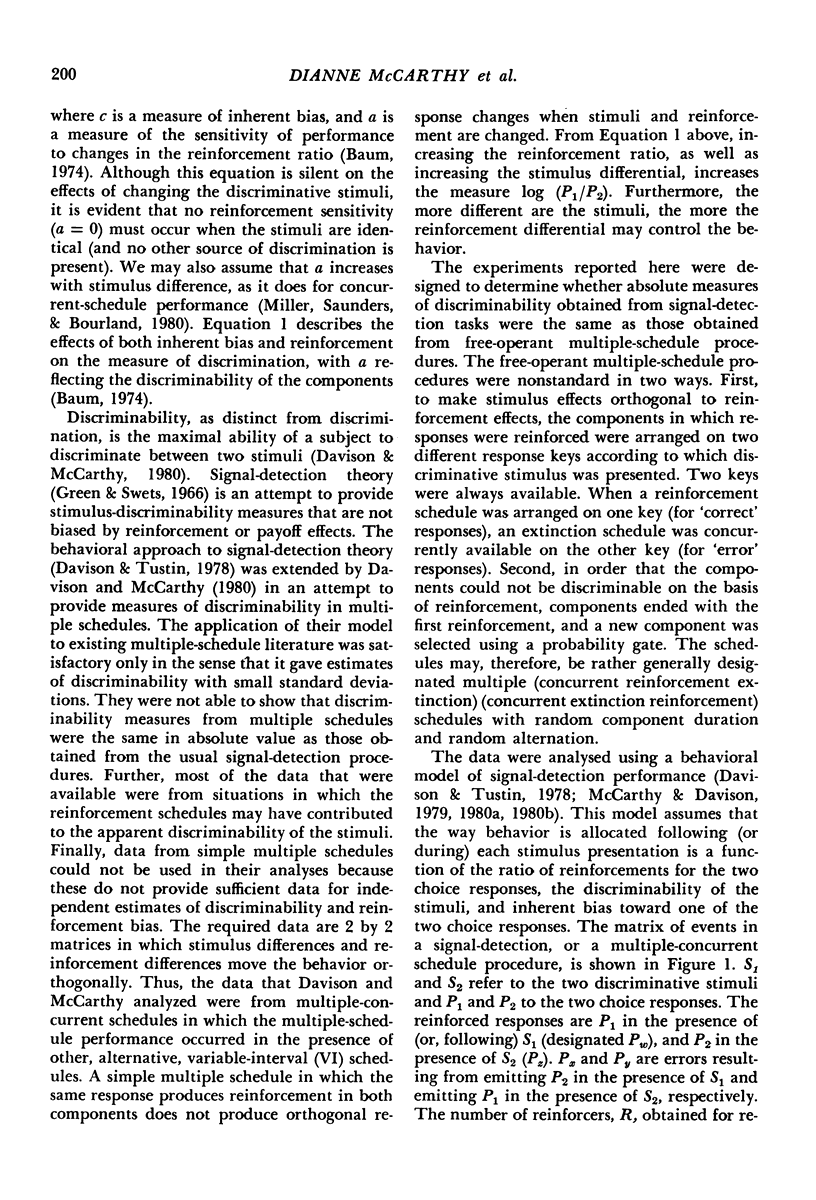
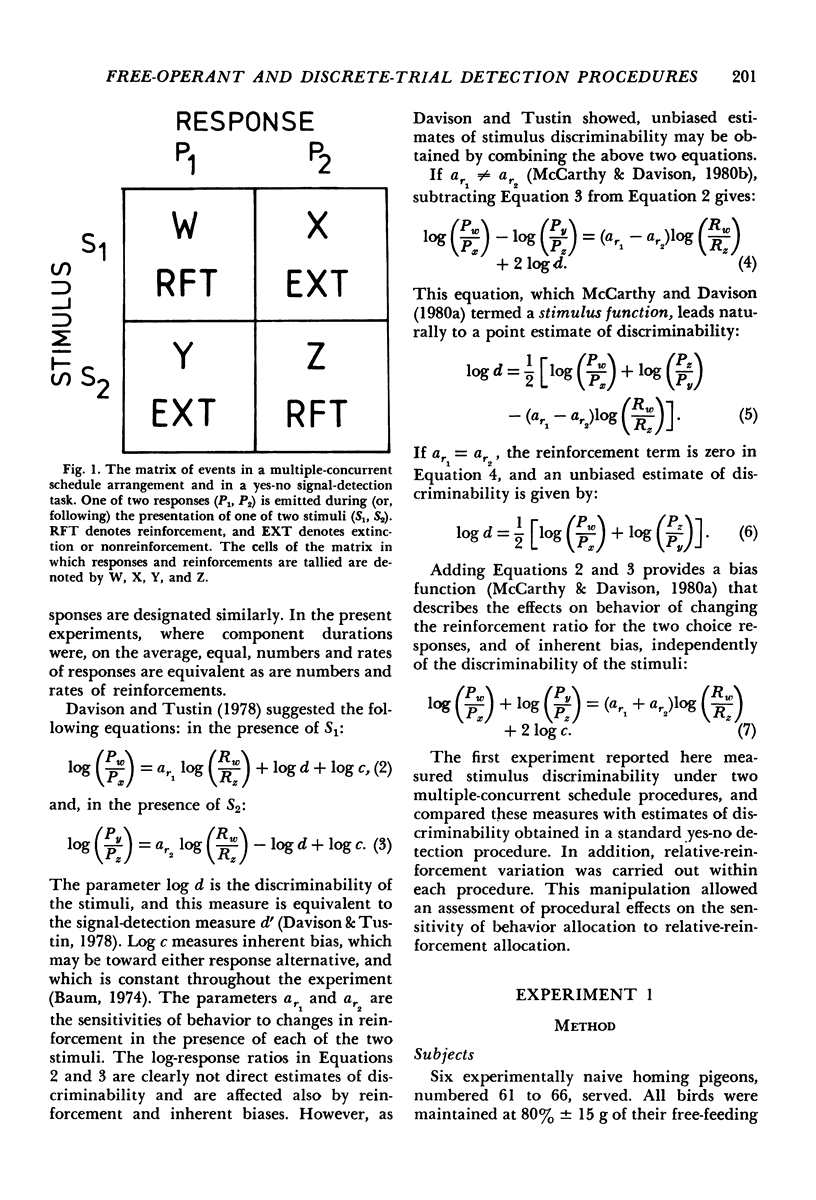
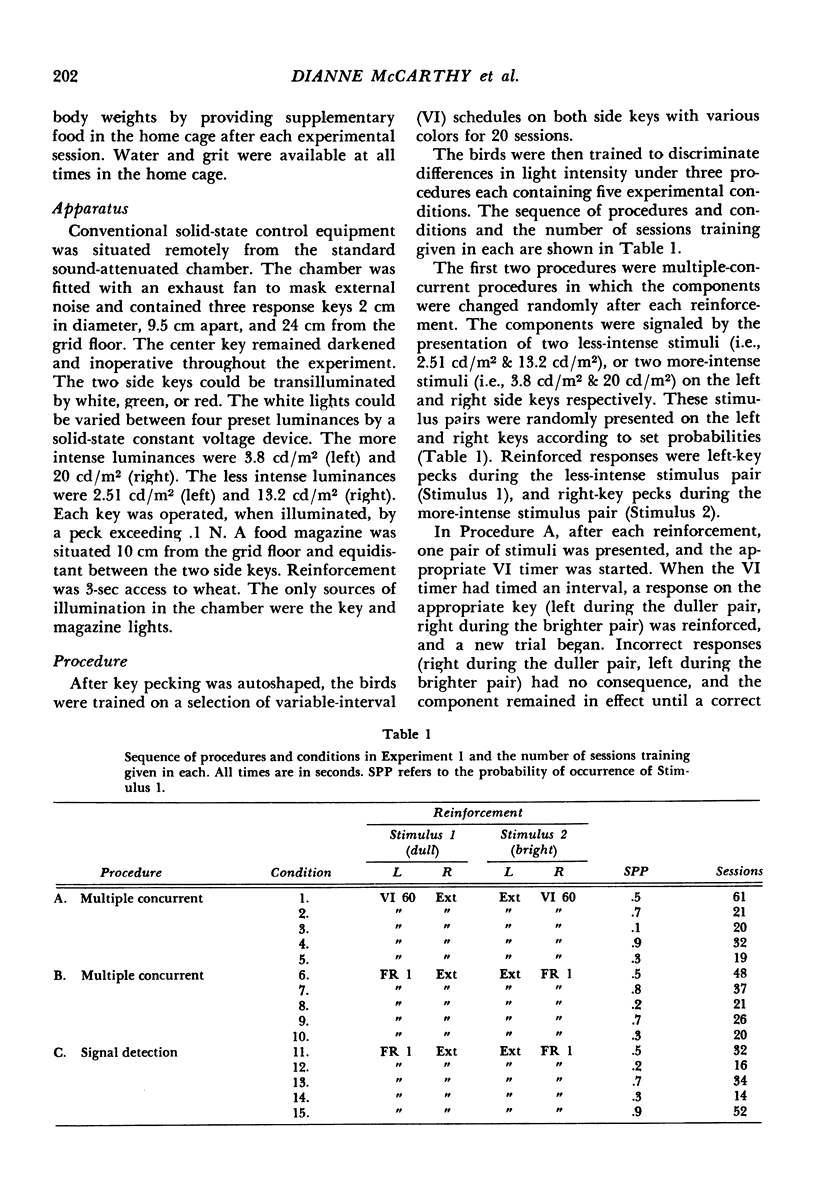
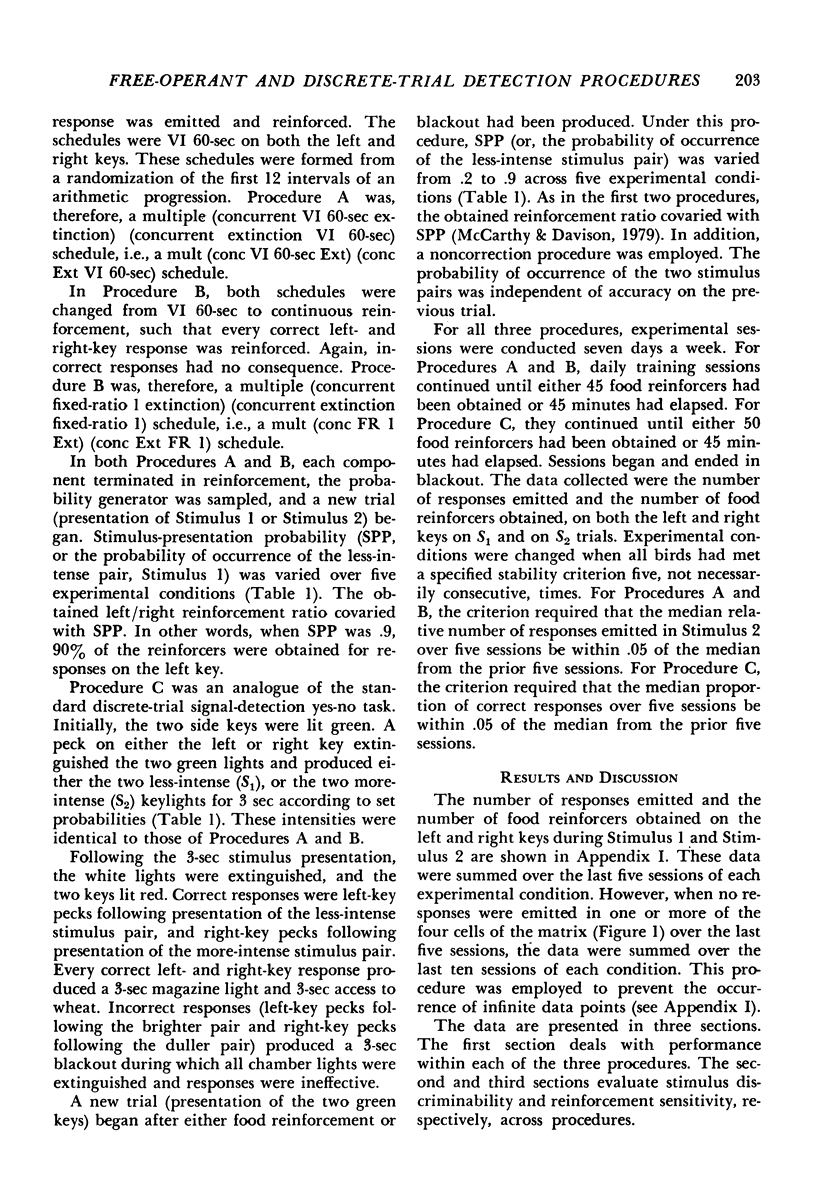
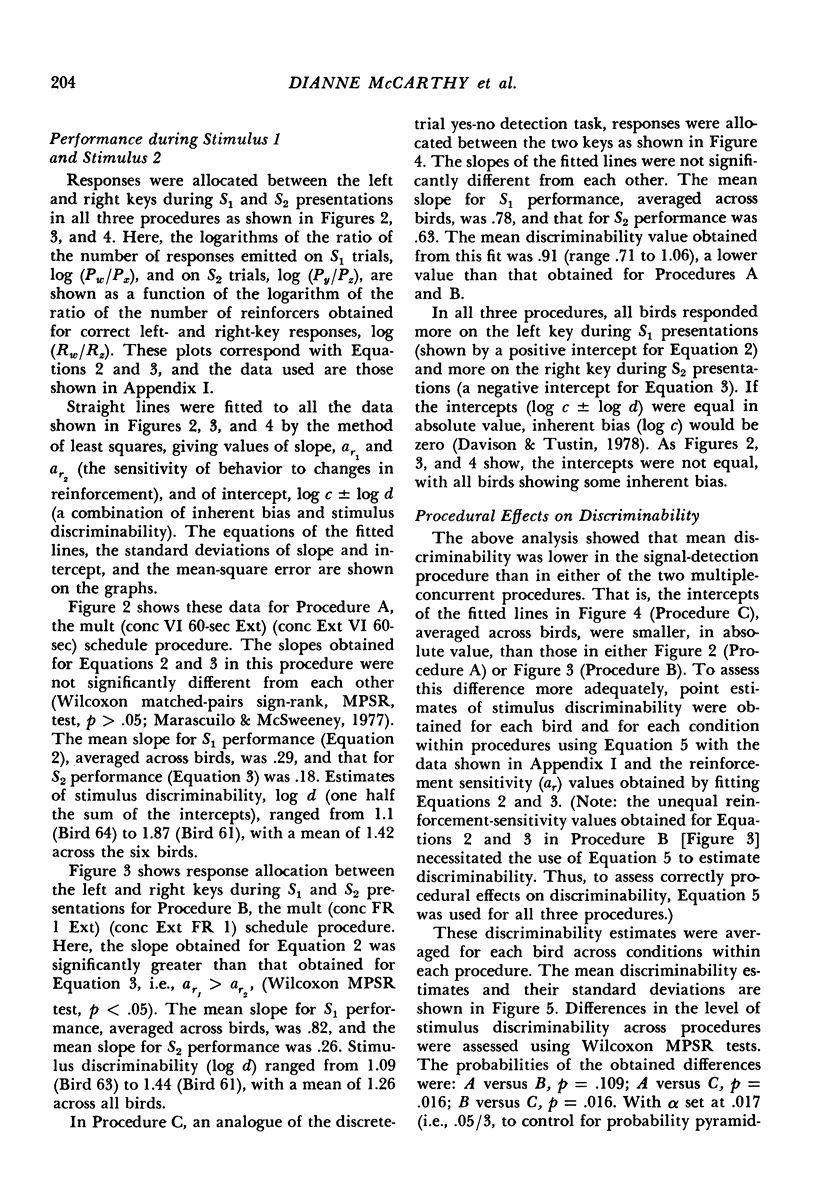
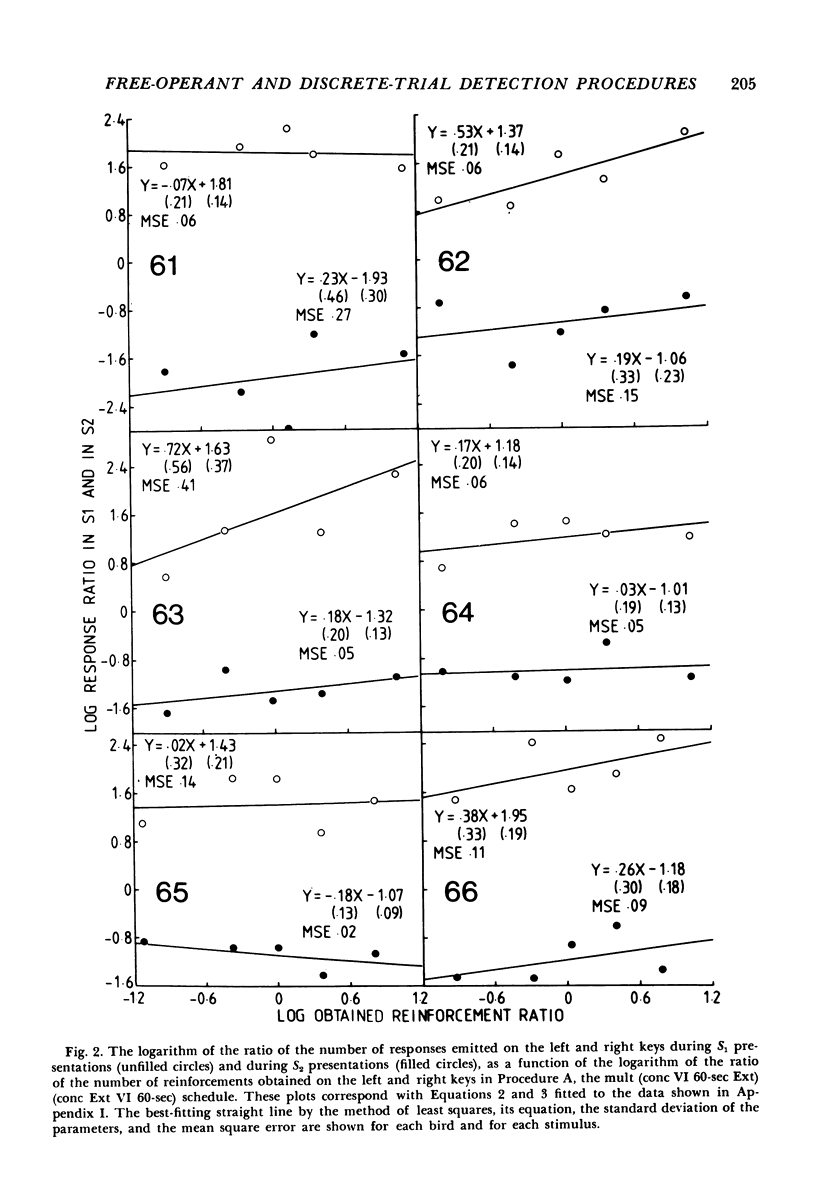
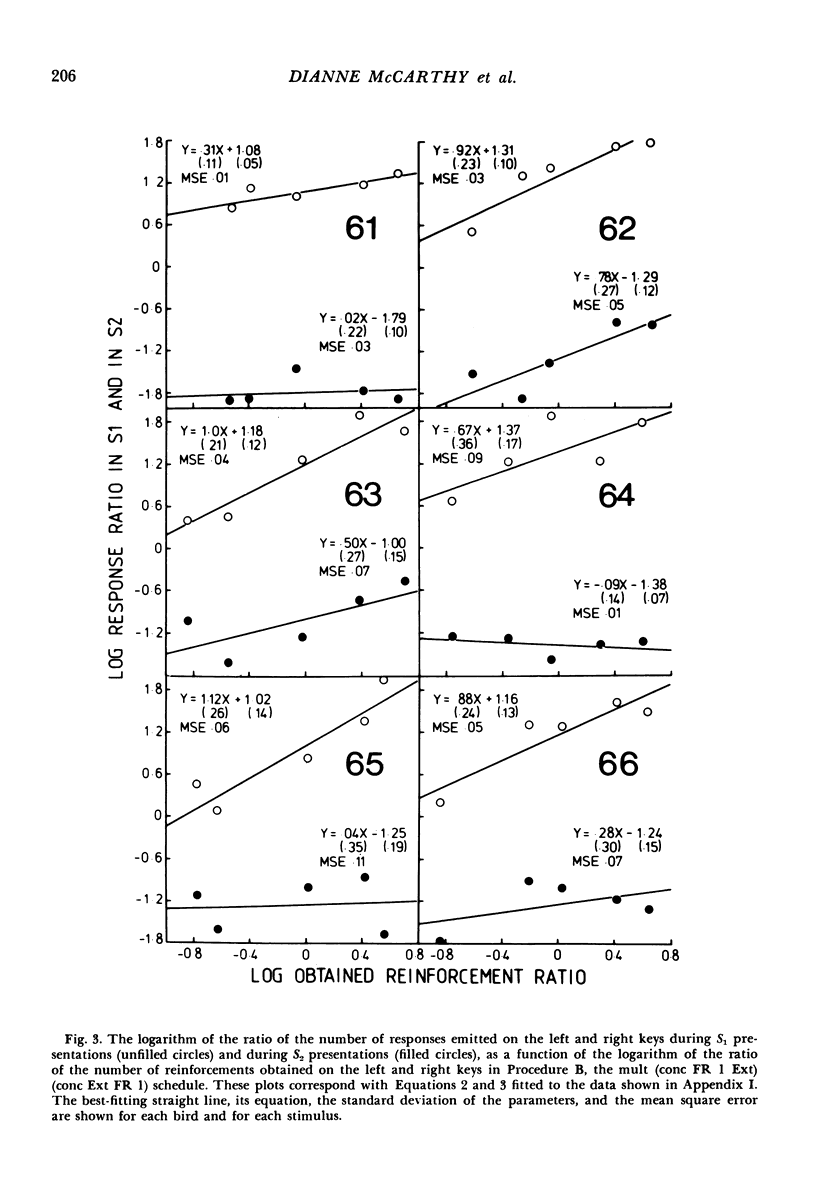
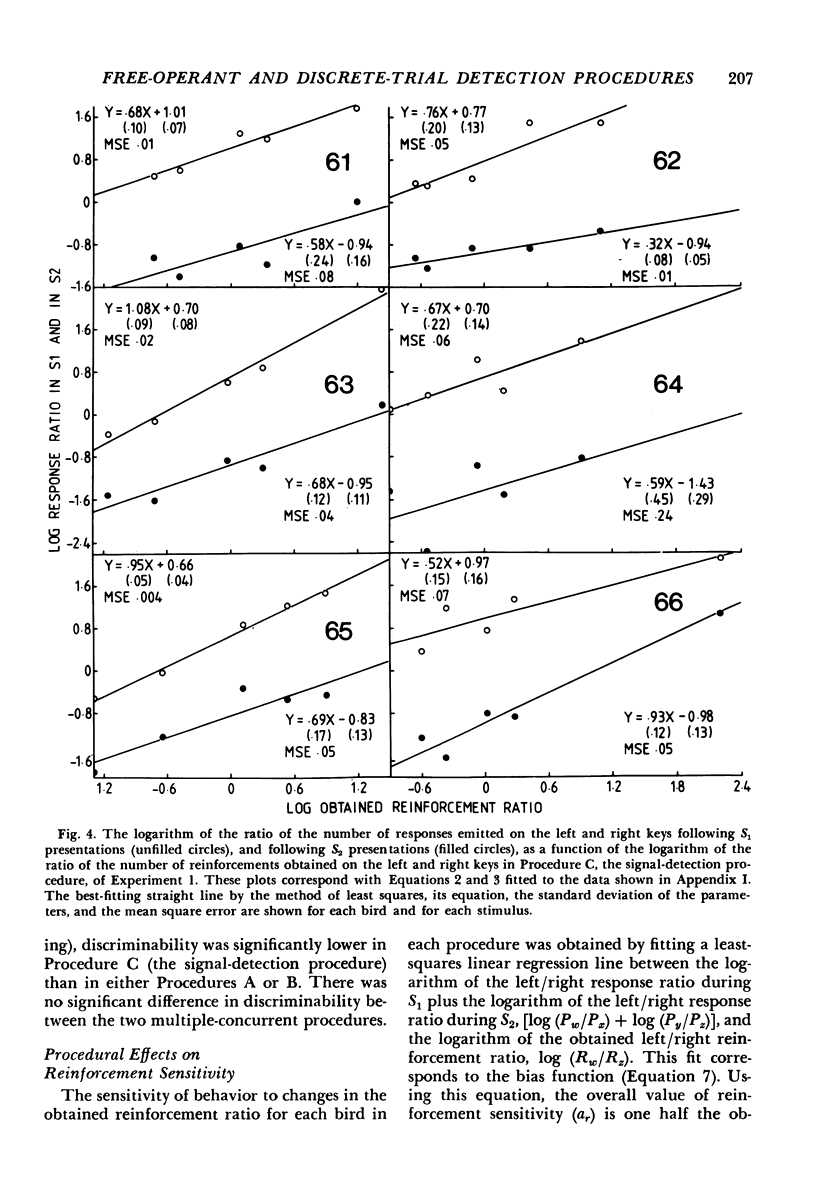
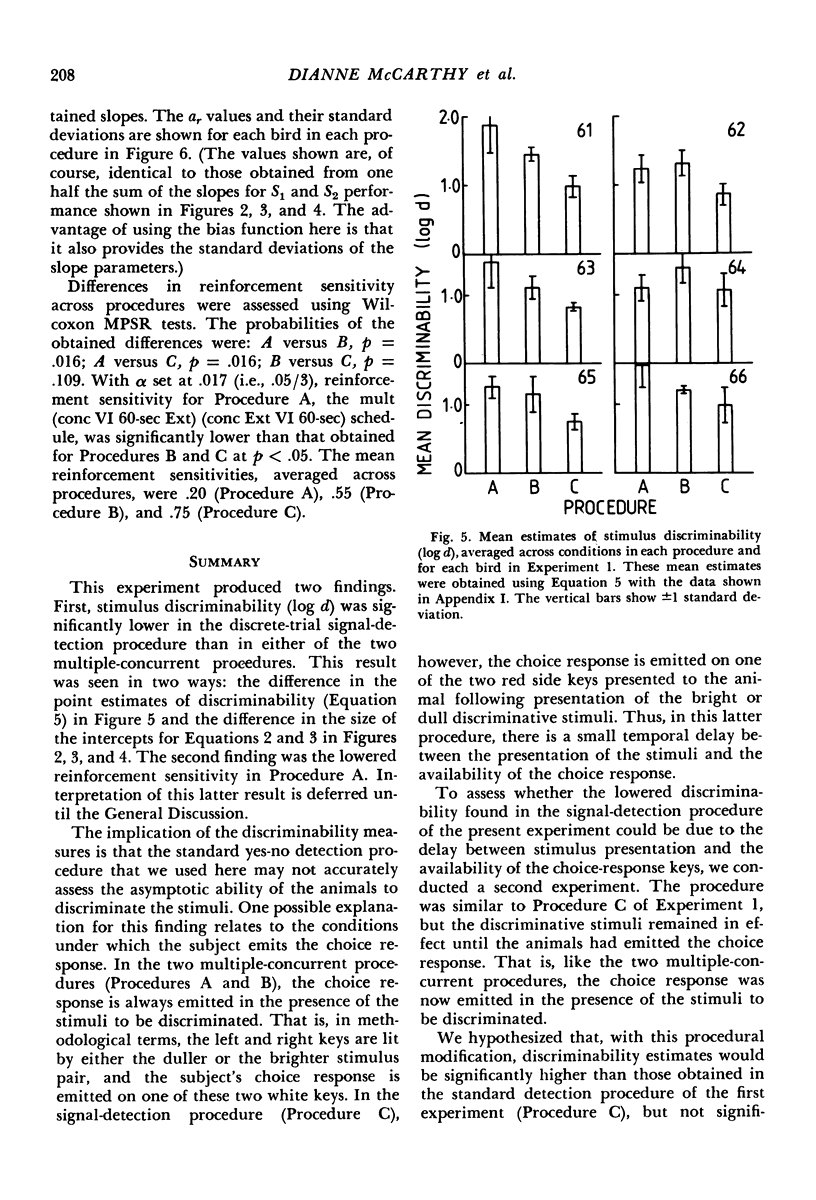
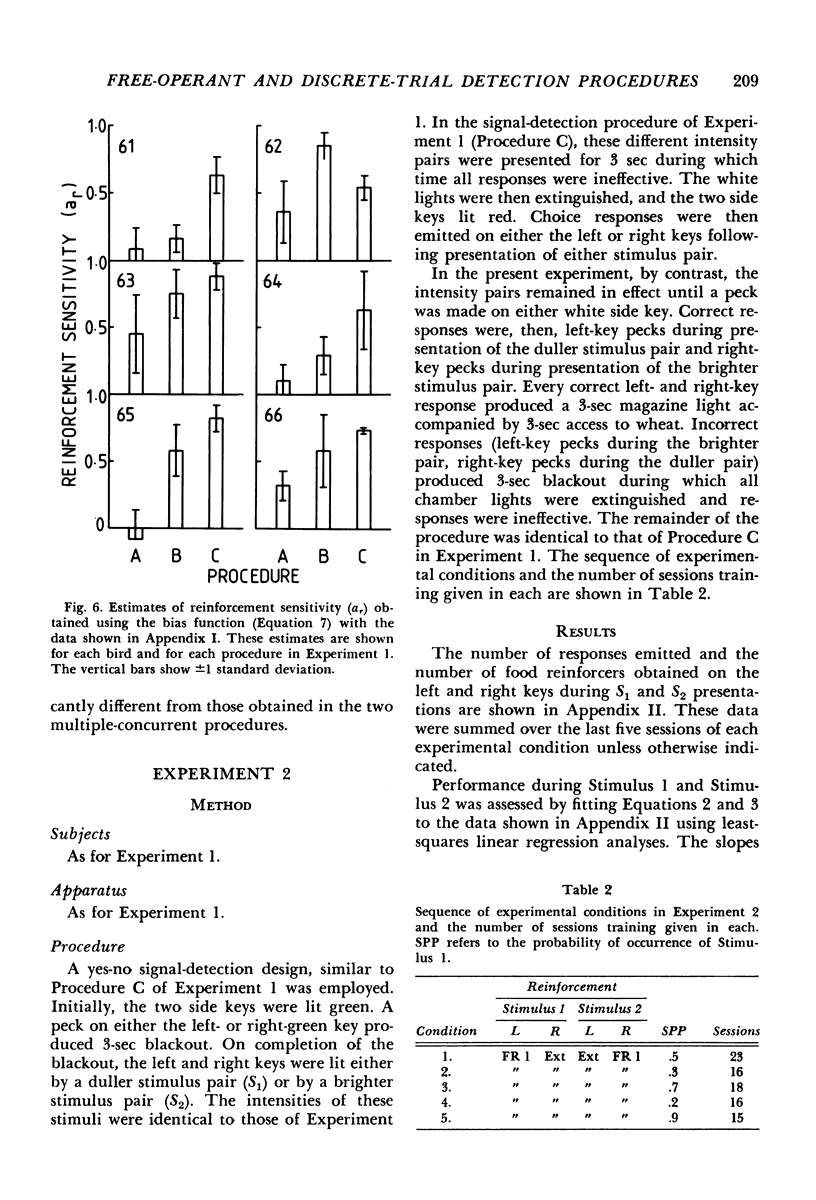
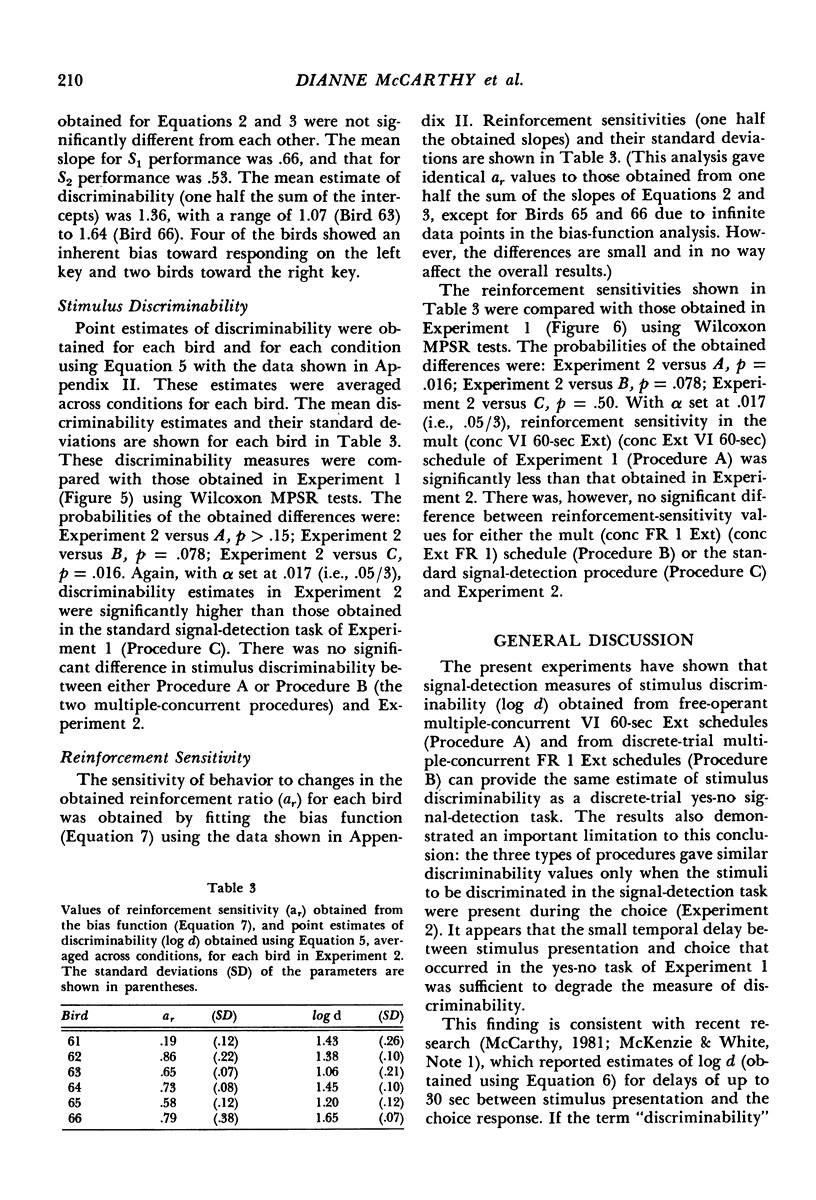
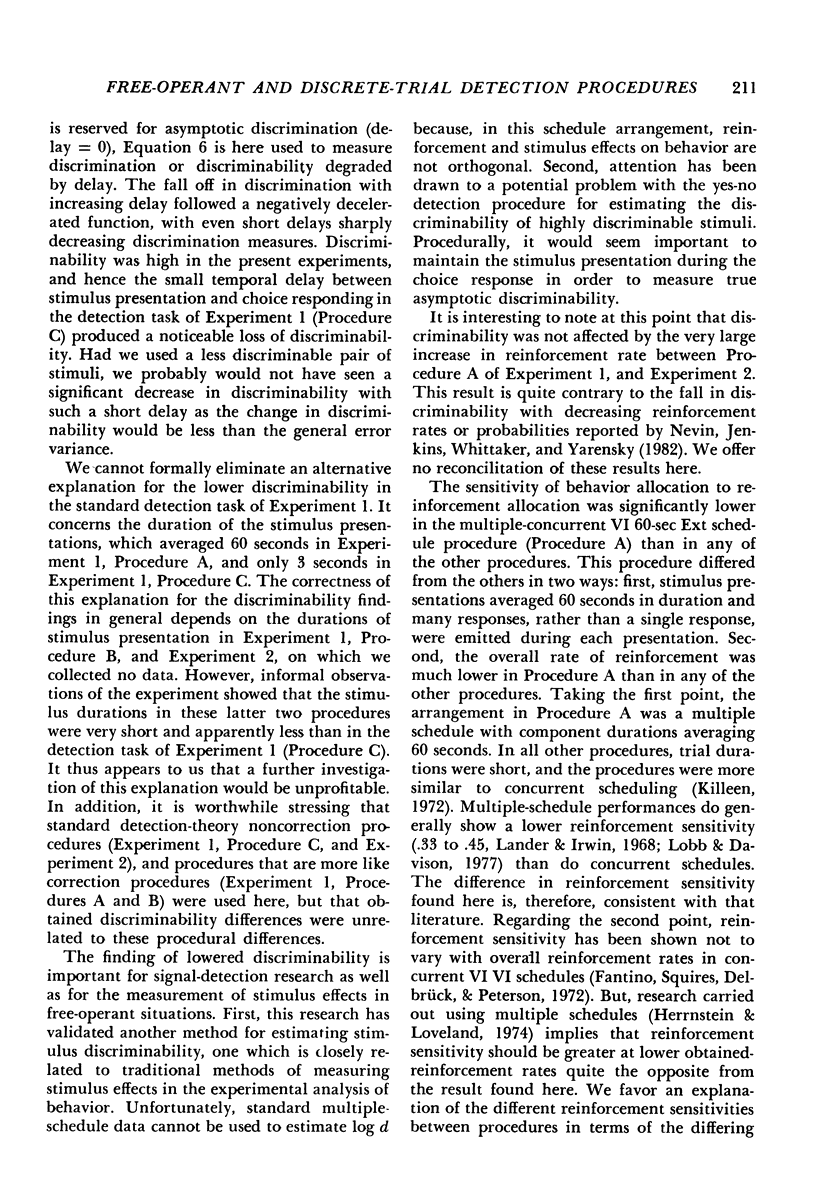
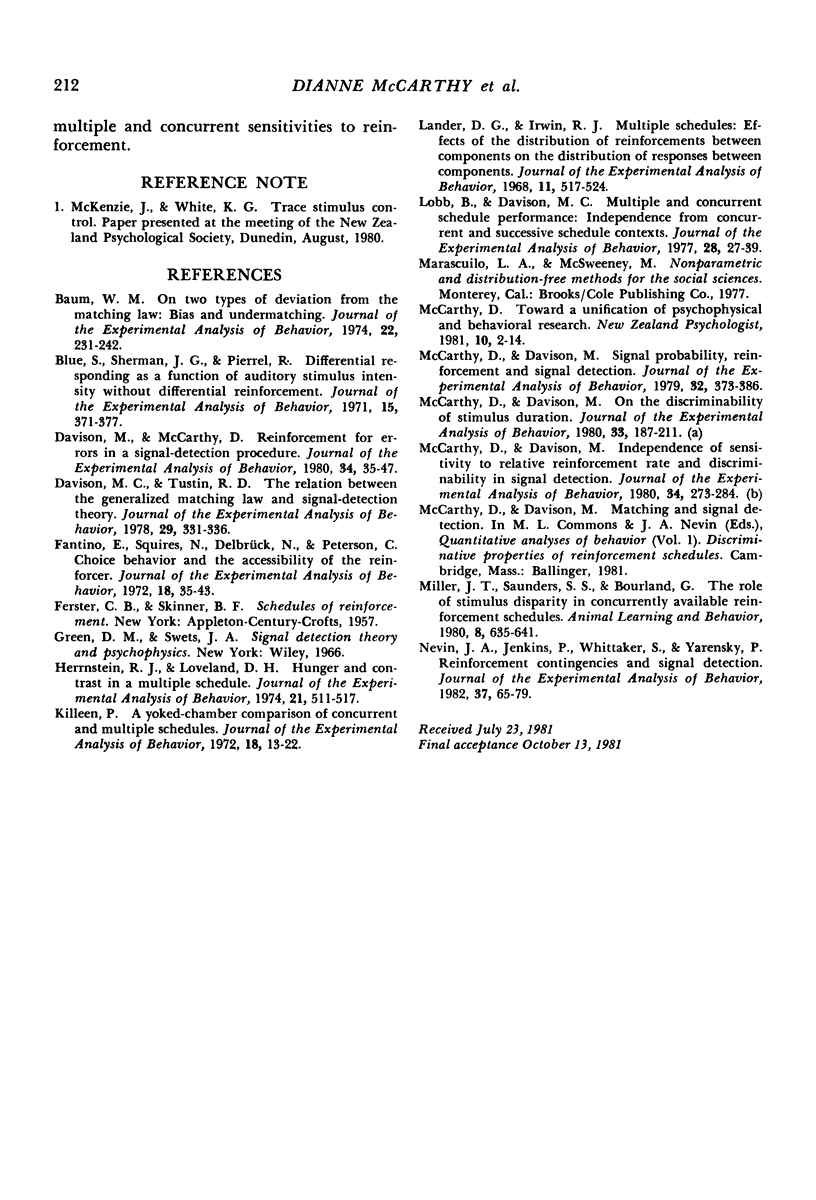
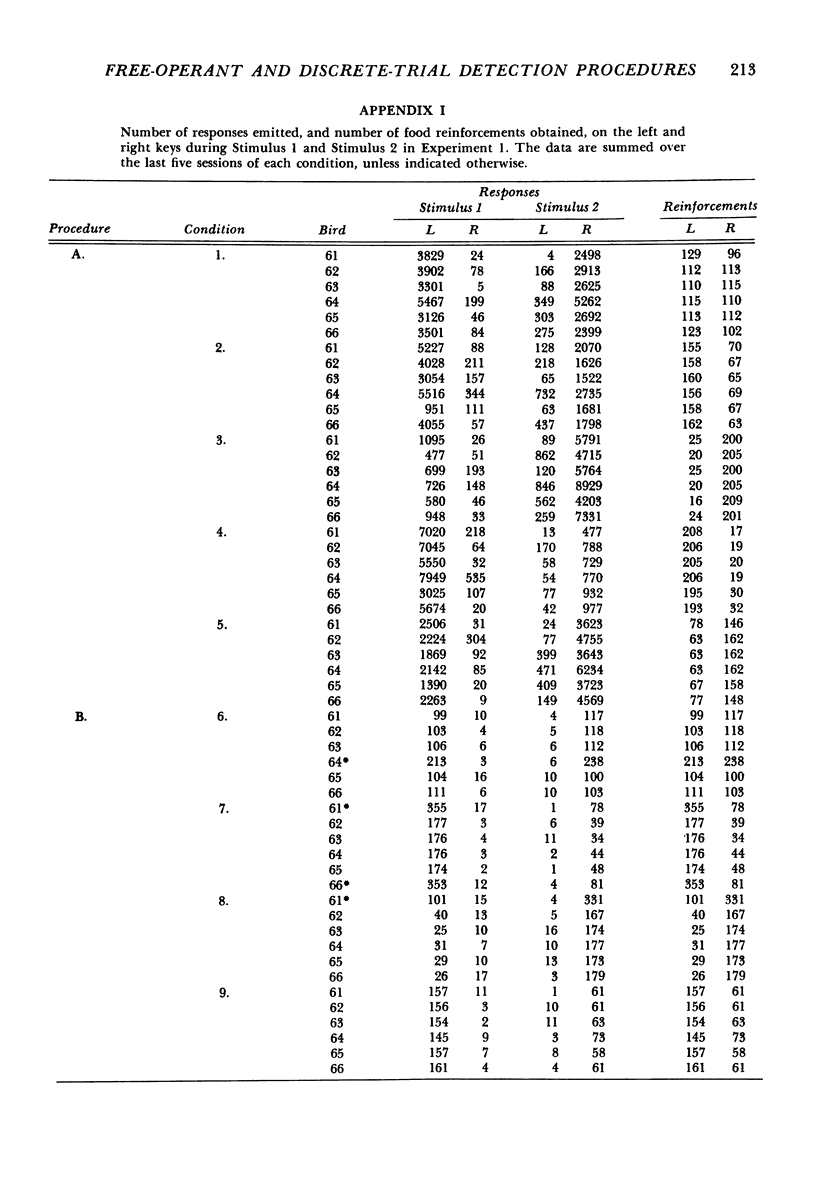
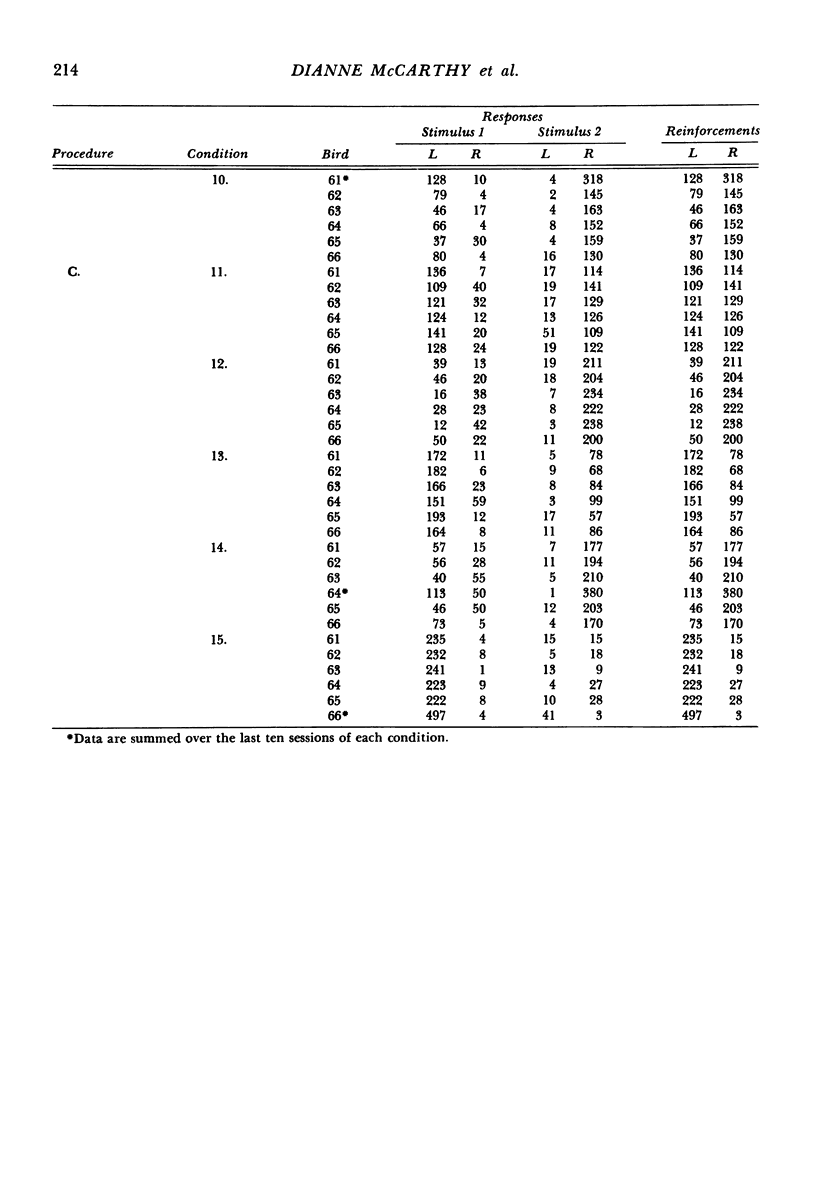
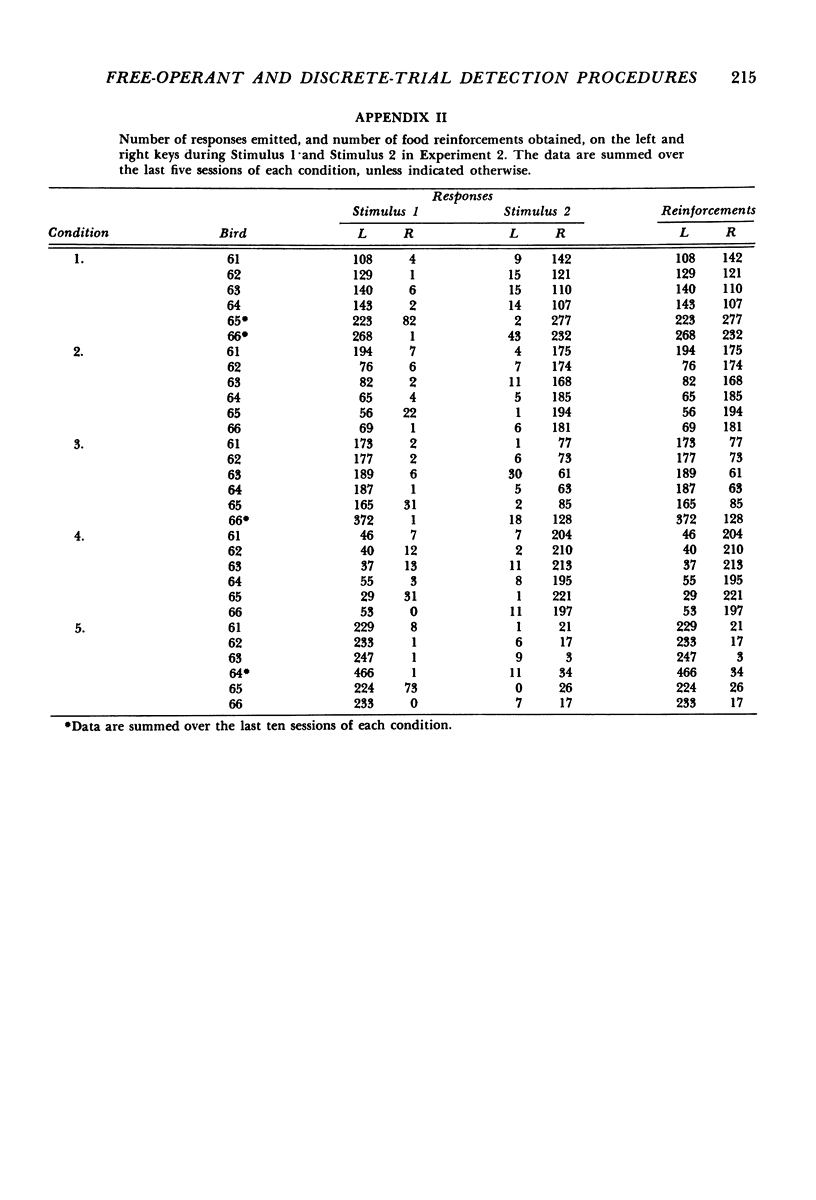
Selected References
These references are in PubMed. This may not be the complete list of references from this article.
- Baum W. M. On two types of deviation from the matching law: bias and undermatching. J Exp Anal Behav. 1974 Jul;22(1):231–242. doi: 10.1901/jeab.1974.22-231. [DOI] [PMC free article] [PubMed] [Google Scholar]
- Blue S., Sherman J. G., Pierrel R. Differential responding as a function of auditory stimulus intensity without differential reinforcement. J Exp Anal Behav. 1971 May;15(3):371–377. doi: 10.1901/jeab.1971.15-371. [DOI] [PMC free article] [PubMed] [Google Scholar]
- Davison M. C., Tustin R. D. The relation between the generalized matching law and signal-detection theory. J Exp Anal Behav. 1978 Mar;29(2):331–336. doi: 10.1901/jeab.1978.29-331. [DOI] [PMC free article] [PubMed] [Google Scholar]
- Davison M., McCarthy D. Reinforcement for errors in a signal-detection procedure. J Exp Anal Behav. 1980 Jul;34(1):35–47. doi: 10.1901/jeab.1980.34-35. [DOI] [PMC free article] [PubMed] [Google Scholar]
- Fantino E., Squires N., Delbrück N., Peterson C. Choice behavior and the accessibility of the reinforcer. J Exp Anal Behav. 1972 Jul;18(1):35–43. doi: 10.1901/jeab.1972.18-35. [DOI] [PMC free article] [PubMed] [Google Scholar]
- Herrnstein R. J., Loveland D. H. Hunger and contrast in a multiple schedule. J Exp Anal Behav. 1974 May;21(3):511–517. doi: 10.1901/jeab.1974.21-511. [DOI] [PMC free article] [PubMed] [Google Scholar]
- Killeen P. A yoked-chamber comparison of concurrent and multiple schedules. J Exp Anal Behav. 1972 Jul;18(1):13–22. doi: 10.1901/jeab.1972.18-13. [DOI] [PMC free article] [PubMed] [Google Scholar]
- Lander D. G., Irwin R. J. Multiple schedules: effects of the distribution of reinforcements between component on the distribution of responses between conponents. J Exp Anal Behav. 1968 Sep;11(5):517–524. doi: 10.1901/jeab.1968.11-517. [DOI] [PMC free article] [PubMed] [Google Scholar]
- Lobb B., Davison M. C. Multiple and concurrent schedule performance: independence from concurrent and successive schedule contexts. J Exp Anal Behav. 1977 Jul;28(1):27–39. doi: 10.1901/jeab.1977.28-27. [DOI] [PMC free article] [PubMed] [Google Scholar]
- McCarthy D., Davison M. Independence of sensitivity to relative reinforcement rate and discriminability in signal detection. J Exp Anal Behav. 1980 Nov;34(3):273–284. doi: 10.1901/jeab.1980.34-273. [DOI] [PMC free article] [PubMed] [Google Scholar]
- McCarthy D., Davison M. On the discriminability of stimulus duration. J Exp Anal Behav. 1980 Mar;33(2):187–211. doi: 10.1901/jeab.1980.33-187. [DOI] [PMC free article] [PubMed] [Google Scholar]
- McCarthy D., Davison M. Signal probability, reinforcement and signal detection. J Exp Anal Behav. 1979 Nov;32(3):373–386. doi: 10.1901/jeab.1979.32-373. [DOI] [PMC free article] [PubMed] [Google Scholar]
- Nevin J. A., Jenkins P., Whittaker S., Yarensky P. Reinforcement contingencies and signal detection. J Exp Anal Behav. 1982 Jan;37(1):65–79. doi: 10.1901/jeab.1982.37-65. [DOI] [PMC free article] [PubMed] [Google Scholar]


